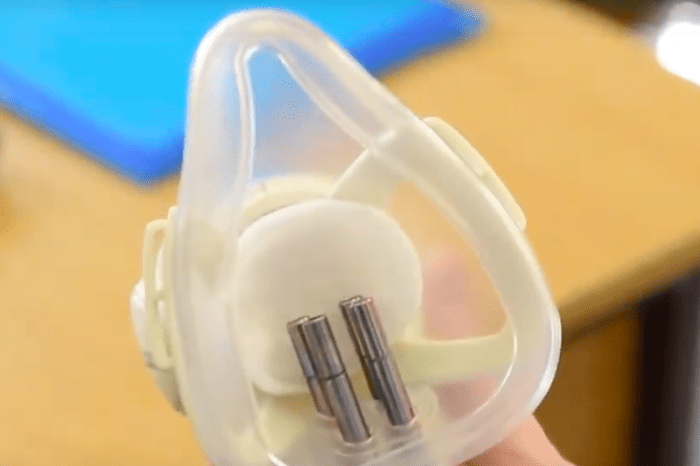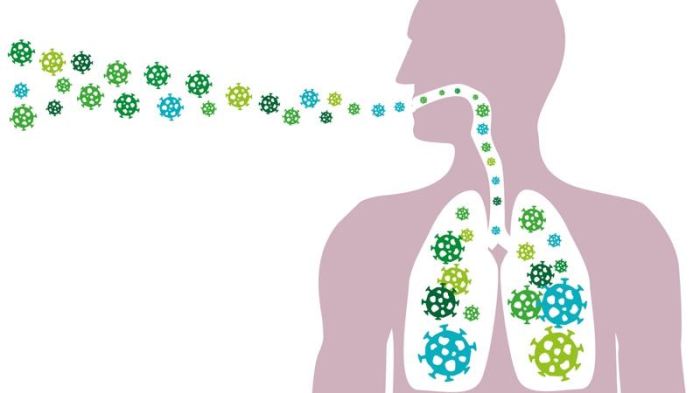Lung Cancer Breathalyzer: A Game-Changer in Early Detection
Early detection of lung cancer is crucial for improving treatment outcomes and increasing survival rates. When lung cancer is caught in its early stages, the chances of successful treatment are significantly higher. This is because smaller tumors are more likely to be completely removed by surgery, and the cancer is less likely to have spread to other parts of the body.
The new breathalyzer technology is a promising development in the fight against lung cancer. It works by detecting specific volatile organic compounds (VOCs) in the breath that are associated with lung cancer. These VOCs are released by the cancerous cells and can be detected in the breath even before any symptoms are present.
Breathalyzer Technology
The breathalyzer uses a sophisticated sensor system to identify and quantify these VOCs. The technology is based on the principle of gas chromatography-mass spectrometry (GC-MS). A sample of breath is collected and passed through a GC column, which separates the different VOCs based on their boiling points. The separated VOCs are then detected by a mass spectrometer, which measures their mass-to-charge ratio. This information is then used to identify the presence and concentration of specific VOCs that are indicative of lung cancer.
Comparison to Traditional Screening Methods
The breathalyzer approach offers several advantages over traditional lung cancer screening methods, such as chest X-rays and CT scans:
- Cost-effectiveness: The breathalyzer is significantly less expensive than CT scans, making it more accessible to a wider population.
- Accessibility: The breathalyzer can be easily administered in a pharmacy setting, making it more convenient for individuals to get screened.
- Non-invasive: The breathalyzer is a non-invasive procedure, which makes it more comfortable for patients.
Pharmacy Trials
The Lung Cancer Breathalyzer, a groundbreaking innovation in early cancer detection, is set to undergo trials in a familiar and accessible setting: pharmacies. This strategic move aims to significantly expand the reach and convenience of this life-saving technology.
By conducting trials in pharmacies, researchers can tap into a vast network of readily available testing locations, making it easier for individuals to participate and benefit from early detection opportunities. This approach aligns with the broader goal of promoting accessibility and convenience in healthcare, particularly for lung cancer screening.
Trial Design and Execution, Lung cancer breathalyzer to undergo trials at pharmacies
The pharmacy trials are designed to evaluate the effectiveness and feasibility of the breathalyzer in a real-world setting. The study will involve a diverse group of participants, including individuals at varying risk levels for lung cancer.
- Target Population: The trial will recruit participants from various demographic backgrounds, encompassing different age groups, smoking histories, and family histories of lung cancer. This diverse representation ensures that the breathalyzer’s performance is assessed across a broad spectrum of individuals.
- Recruitment Strategies: Pharmacies will utilize various recruitment strategies to attract participants, such as flyers, online advertisements, and in-store announcements. This multi-pronged approach aims to maximize participation and reach a wide range of individuals.
- Trial Duration: The pharmacy trials are expected to run for a predetermined duration, allowing researchers to gather sufficient data to analyze the breathalyzer’s accuracy, sensitivity, and specificity in detecting lung cancer. The trial duration will be determined based on the required sample size and the expected timeframe for observing meaningful results.
Impact of Pharmacy Trials
The results of the pharmacy trials will provide valuable insights into the breathalyzer’s real-world performance and its potential for widespread adoption.
- Effectiveness Evaluation: The trials will assess the breathalyzer’s ability to accurately detect lung cancer in different populations, including individuals with varying risk factors. This data will contribute to a comprehensive understanding of the breathalyzer’s effectiveness and its limitations.
- Feasibility and Convenience: The pharmacy setting will provide a practical environment to evaluate the feasibility and convenience of the breathalyzer for patients. Data on patient satisfaction, ease of use, and perceived value will be collected to inform future implementation strategies.
- Potential for Widespread Adoption: The findings from the pharmacy trials will inform decisions regarding the breathalyzer’s potential for widespread adoption in healthcare settings. If the trials demonstrate its effectiveness, feasibility, and convenience, the breathalyzer could become a valuable tool for lung cancer screening, potentially leading to earlier diagnoses and improved outcomes.
Impact on Lung Cancer Management and Public Health: Lung Cancer Breathalyzer To Undergo Trials At Pharmacies
The widespread availability of an effective lung cancer breathalyzer could revolutionize the way we approach lung cancer management and public health. This technology has the potential to significantly impact early detection, diagnosis, and treatment, ultimately leading to improved outcomes for patients and a reduction in the burden of lung cancer on society.
Potential Benefits for Lung Cancer Management
The availability of a reliable and accessible breathalyzer for lung cancer screening could dramatically change how we manage the disease. It could lead to:
- Earlier Detection: Early detection is crucial for successful lung cancer treatment. A breathalyzer could allow for earlier diagnosis, potentially leading to better treatment outcomes and a higher survival rate.
- Increased Screening Rates: The convenience and non-invasive nature of a breathalyzer could encourage more individuals to undergo regular lung cancer screenings, leading to a higher detection rate of the disease in its early stages.
- Improved Patient Outcomes: Early detection and diagnosis can lead to more effective treatment options and a higher likelihood of complete recovery.
- Personalized Treatment Plans: Breathalyzer results could potentially provide valuable information about the specific characteristics of a patient’s tumor, enabling personalized treatment plans tailored to individual needs.
Impact on Public Health
The potential benefits of a lung cancer breathalyzer extend beyond individual patient outcomes and have the potential to significantly impact public health:
- Reduced Lung Cancer Mortality: Earlier detection and diagnosis through breathalyzer screening could lead to a substantial decrease in lung cancer mortality rates.
- Reduced Healthcare Costs: Early detection and treatment can help prevent the development of advanced, more costly, and complex lung cancer cases.
- Improved Quality of Life: Earlier diagnosis and treatment can help patients maintain a better quality of life during and after treatment.
- Increased Public Awareness: The availability of a breathalyzer could raise public awareness about lung cancer and encourage individuals to adopt healthier lifestyle choices to reduce their risk of developing the disease.
Ethical Considerations
While the potential benefits of a lung cancer breathalyzer are significant, it’s essential to consider the ethical implications of its use.
- Privacy Concerns: The use of a breathalyzer raises concerns about privacy, as it involves collecting personal medical information.
- Potential for False Positives: It is crucial to ensure the accuracy of the breathalyzer to minimize the risk of false positives, which could lead to unnecessary anxiety and invasive procedures.
- Access and Equity: It is important to ensure that the breathalyzer is accessible to all individuals, regardless of their socioeconomic status or geographic location.
- Informed Consent: Individuals should be fully informed about the potential benefits and risks of using the breathalyzer before undergoing screening.
Future Directions and Research Opportunities
The development of the lung cancer breathalyzer marks a significant advancement in early cancer detection. However, ongoing research and development are crucial to further enhance its effectiveness and broaden its applications. Future research directions aim to refine the technology, expand its diagnostic capabilities, and explore its potential in personalized medicine and public health initiatives.
Improving Sensitivity and Specificity
Improving the sensitivity and specificity of the breathalyzer is a critical area of focus. This involves refining the analytical techniques used to detect volatile organic compounds (VOCs) in breath samples. Researchers are exploring advanced analytical methods such as gas chromatography-mass spectrometry (GC-MS) and high-performance liquid chromatography (HPLC) to achieve greater accuracy and precision in VOC detection.
For instance, researchers are investigating the use of artificial intelligence (AI) algorithms to analyze breath data, potentially improving the accuracy and sensitivity of the breathalyzer.
Expanding Diagnostic Capabilities
The breathalyzer’s potential extends beyond lung cancer detection. Future research aims to explore its use in detecting other types of cancer, including breast cancer, colorectal cancer, and prostate cancer. Additionally, researchers are investigating the potential of the breathalyzer to detect other health conditions, such as chronic obstructive pulmonary disease (COPD), asthma, and infections.
Researchers are currently studying the VOC profiles of different types of cancer to identify specific biomarkers that can be detected by the breathalyzer.
Personalized Medicine and Public Health
The breathalyzer has the potential to revolutionize personalized medicine by enabling early diagnosis and tailored treatment strategies. Future research will focus on developing personalized breath profiles for individuals, which can be used to monitor disease progression and predict treatment response.
Imagine a future where a simple breath test can provide a personalized risk assessment for lung cancer, allowing for targeted interventions and early treatment.
The breathalyzer also holds significant promise for public health initiatives. By enabling widespread screening, it can help identify individuals at high risk for lung cancer and facilitate early intervention.
The breathalyzer could be incorporated into routine health checkups, making early detection of lung cancer accessible to a wider population.
Lung cancer breathalyzer to undergo trials at pharmacies – The potential of a lung cancer breathalyzer to transform early detection is immense. Imagine a world where catching lung cancer early becomes as simple as a quick trip to the pharmacy. This technology could dramatically improve treatment outcomes and survival rates, while also easing the burden on healthcare systems. While there are still ethical considerations to address, the future of lung cancer detection is looking brighter than ever. This is a story that deserves to be told, and one that we’ll be following closely as it unfolds.
Imagine popping into your local pharmacy for a quick checkup, and instead of a blood test, you’re using a breathalyzer to screen for lung cancer. It sounds futuristic, but this technology is on the horizon. This new approach, much like the impressive warcraft armies of azeroth is a mod made with the starcraft 2 editor that lets you relive the classic Warcraft battles in a new way, is all about pushing the boundaries of what’s possible.
The breathalyzer technology aims to make early lung cancer detection easier and more accessible, hopefully leading to better outcomes for patients.
 Standi Techno News
Standi Techno News

